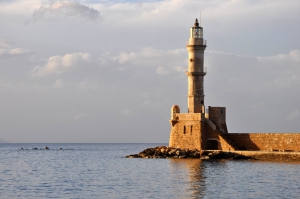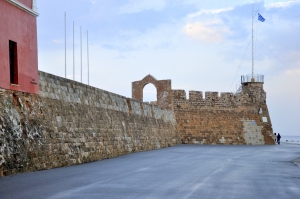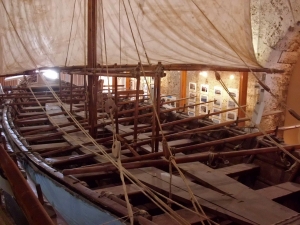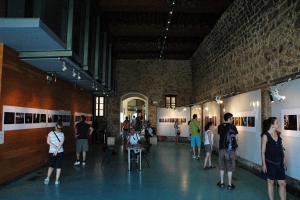The Venetian Port of Chania with the Egyptian Lighthouse is bigger than the rest two ports of the same era, that of Heraklion and Rethymnon. A walk along its sides is one of the best experiences in Greece, as the entire area in conjunction with the Old Venetian Town is a vibrant Venetian monument.
During the Venetian and Turkish periods, Chania presented a high development in commerce and marine mercantile. Not only in imports but also the export of various products was notable, despite the lack of a large and safe port. Since this time, it was common knowledge that the port of Chania was vulnerable due to the weather conditions and for this reason, it was not considered an appropriate port. The natural port of Souda, on the other hand, was in a much better position and was perfect for a port.
After the occupation of the city by the Genoans, the need for the construction of a port was once again highlighted, and the local authorities started the construction works during the Venetian period. In 1302, the request was submitted to the government by rector Marino Gradenigo and was finally accepted.
The first phase of the construction of the port was between 1320 and 1356. However, during this time it was once again realized that the natural condition and morphology of the port was inappropriate, as the port was overall small in size and shallow, it was vulnerable to north and west winds, and its east basin suffered from alluvions. Thus, the reports of the officials often record the urgent need to clean and deepen the port (especially its east basin).
After the revolution of "Aghios Titos" (1363-64), the port of Chania was abandoned and the port of Heraklion was used instead, as the port of Rethymnon presented similar problems. During the Venetian period, in 1551, a second request was submitted to deepen the port of Chania and to construct a wall with battlements to protect the ships from the rocks and reefs.
In 1645 however, the city falls into the hands of the Turkish army after the siege of Chania. The occupation of Crete by the Turks was official in 1669, after 25 years of war when "Handakas" (Heraklion) fell. The new rulers of Crete had no interest to maintain the port of Chania, which was completely neglected during the Ottoman period.
Between the years 1831-1841, Crete was assigned to the Regent of Egypt, Mehmet Ali, as a gift for his services to the Sultan during the 1821 revolution in Crete and Peloponnese. The value of the port of Chania was then recognized, as well as its potential to improve the local economy. It is said that Mehmet Ali ordered Mustapha Pasha to clean the basin of the port of Chania, conduct maintenance works, and construct the lighthouse. Indeed, the construction works were finally completed, after a lot of effort and money.
However, even then the ships were not able to approach the land, especially when the weather conditions were harsh, and the passengers and goods were transferred by small boats from the ships to the land, in front of the Mosque of "Kioutsouk Hassan", commonly known as "Giali Tzamisi".
Nowadays, the picturesque Venetian port of Chania gathers a large number of visitors and local people, especially during the summer months. There are many restaurants, taverns, bars, and cafeterias lengthwise to the coastline to offer you a pleasant time and entertainment.



















































































